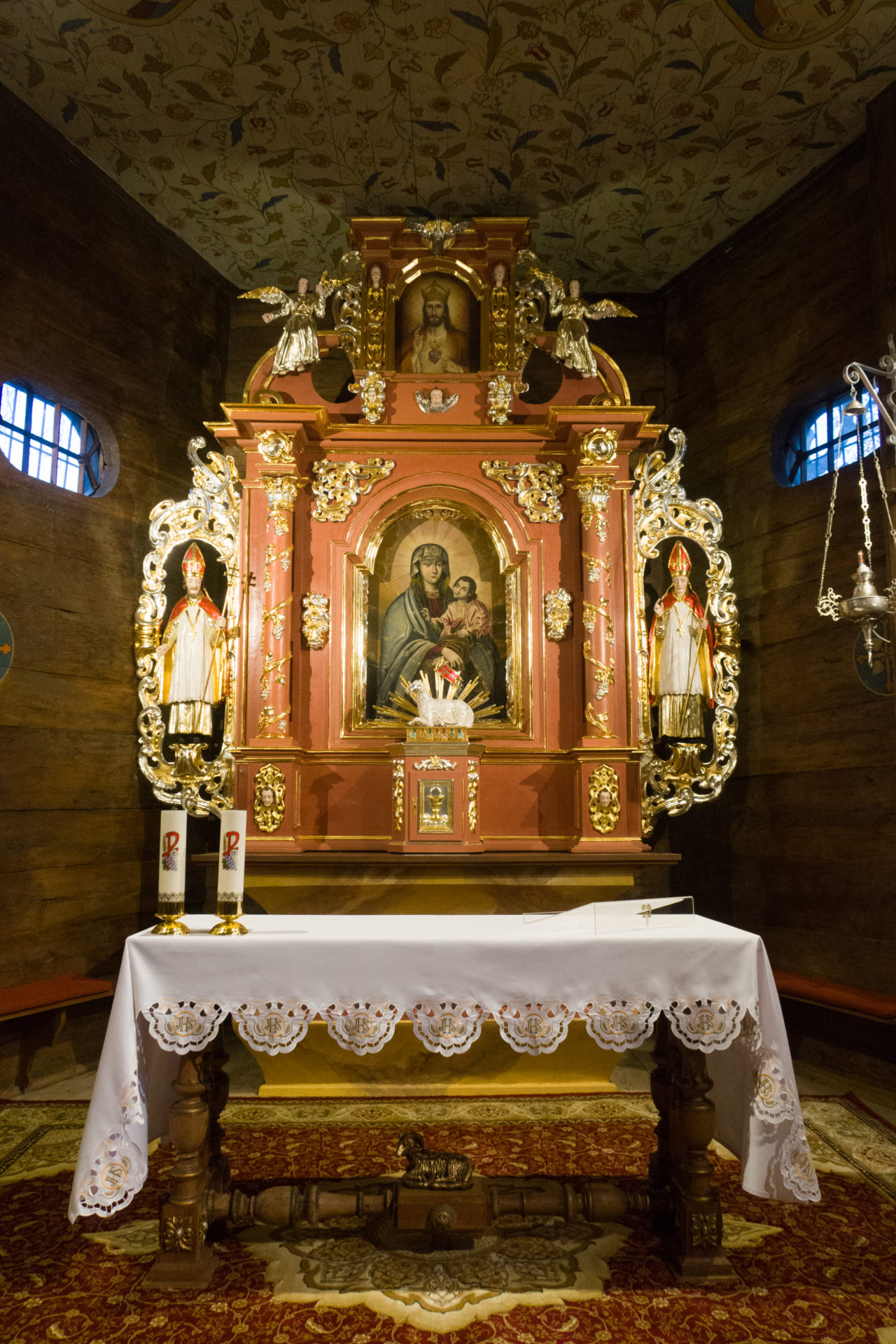
Monuments
Mannerist altar

The main altar was made in the Mannerist style in the middle of the 17th century. The style stems from the Renaissance and constitutes its reshaped, changed (mannerist) artistic form. It is characterized by sophistication, refinement, artistry, deliberate artificiality of forms which presumes freedom of artist’s imagination and creativity. An element of surprise, illusion and a fanciful unconventionality of ideas are appreciated.
Realistic figures of saint bishops, the patron saints of Poland: St. Adalbert and Stanislaus, were placed in sophisticated frames in auricular style.
The patron saint of Poland

St. Adalbert, the first patron saint of Poland, was born in 956 in Libice in Bohemia. He received thorough education in a cathedral school in Magdeburg. Despite his young age, upon his return, he became the bishop of Prague. He called for transformation of life and abandonment of bad habits of the noblemen and the clergy as well, however, his opinion was not popular. He left Prague and joined the Benedictines and together with his brother, Radzym Gaudenty, he settled in a monastery on the Aventine Hill in Rome. After many voyages to European sanctuaries he visited the court of the Prince Bolesław the Brave. From there, he left for a mission to the pagan Prussia. During his Christianization attempts with his companions, he was attacked and killed. The martyr’s body was reclaimed by Bolesław the Brave and buried in Gniezno. Just after two years after his death he was canonized.
Rood beam
The Group of Crucifixion placed on a rood beam is an interesting object. In the center there is the crucified Christ with the Mother of God and St. John the Evangelist. The expression of the image, the muscular body, visible emotions shown by the poses and faces are characteristic of the Baroque style. Also typical for this period is the shape of the perizonium, the loincloth around Christ’ hips, which is relatively narrow with a finesse knot on the side and a rope. There is also an additional element to the cross – a halo which symbolizes divinity and eternal glory.

Sacrum and profanum

Some elements of furnishings in wooden churches had symbolic functions in dividing the spheres of sacrum and profanum. Undoubtedly, the rood beam was one of them but one should also pay attention to a balustrade because it has not been preserved in many churches. The balustrade was put on the chancel’s steps where the faithful knelt while taking Communion. It is the element of the church’s furnishings where the faithful come close to redemption by accepting the Holy Sacrament.
Private altar
An object which stands out from other wooden historic monuments is an altar from the side chapel built in 1720 and made of larch wood. Its founders were the Lutomski family, the owners of the village Łubowo.
Presumably the altar was an expression of gratitude and served for private prayer. Probably putting of St. John of Nepomuk here – a martyr who died because he didn’t want to break the seal of confession – was not accidental. He was the patron saint to whom the most secret pleas, requests and thanksgiving were entrusted. The altar in the chapel, erected as a votive offering, thanksgiving, is a place of focus and silent, inner prayer.
Characteristic for this altar is a draped, silvered fabric in its centre, called paludamentum.
The fabric is clipped by a crown which is held by angels called puttos.
On the sides of the fabric there are figures of the Mother of God and St. John of Nepomuk.
The symbol of the Eye of Providence surrounded by a halo with golden rays.
A votive offering with the Szeliga coat of arms.


